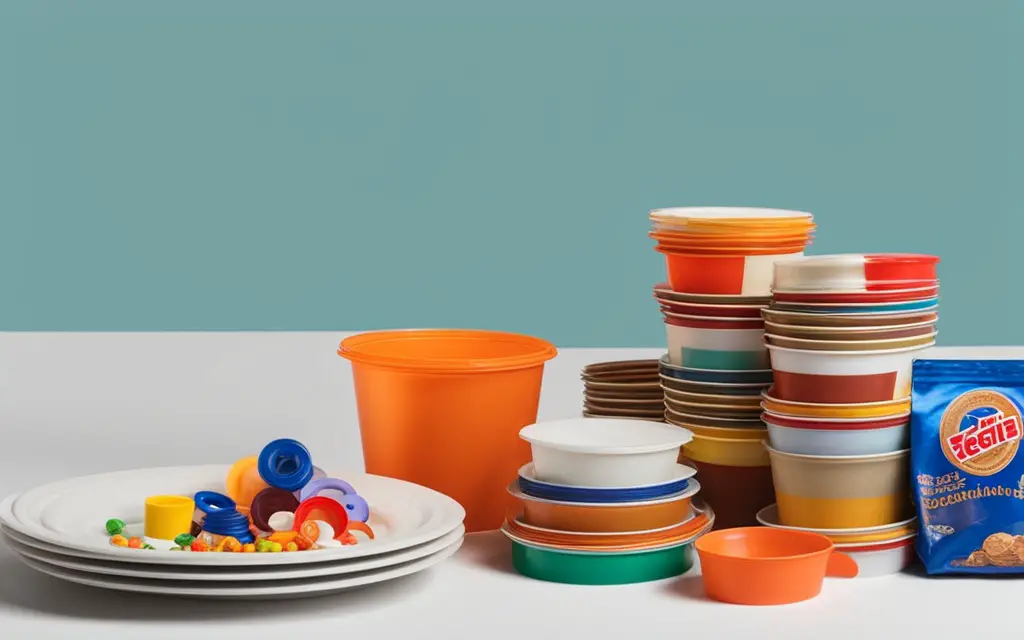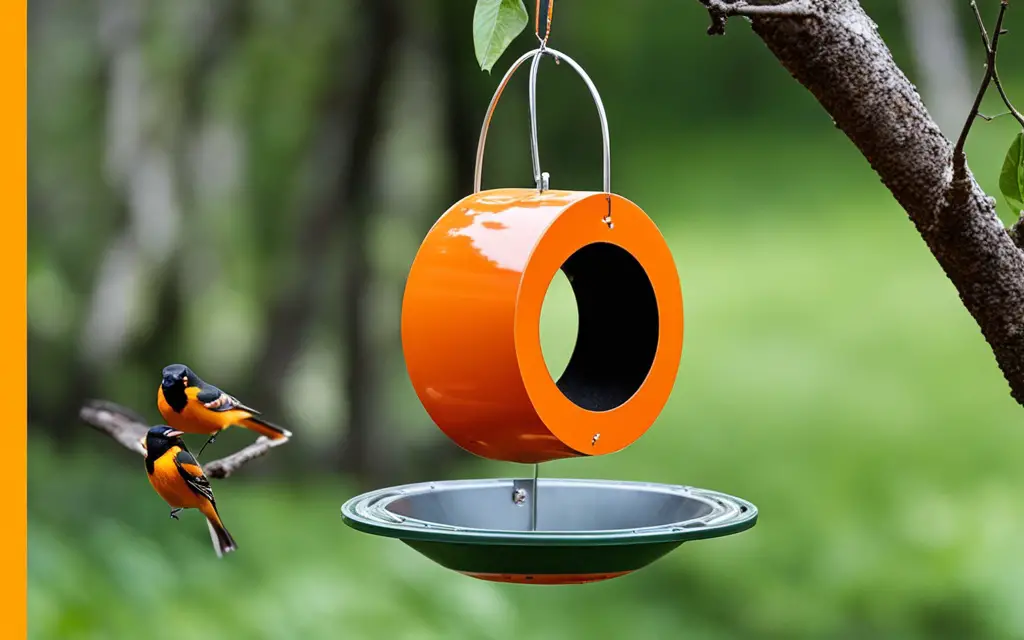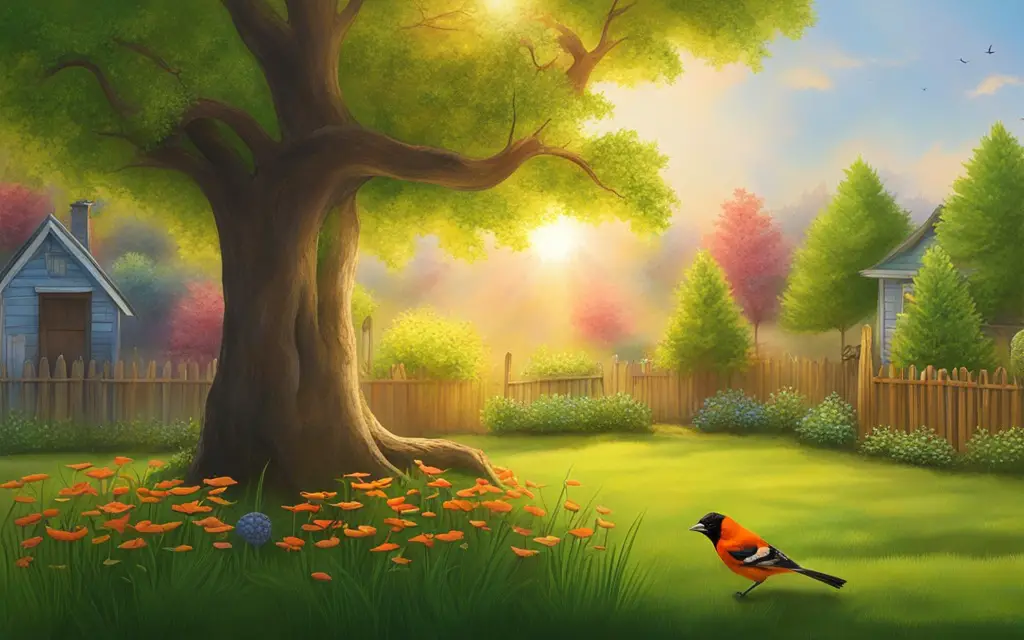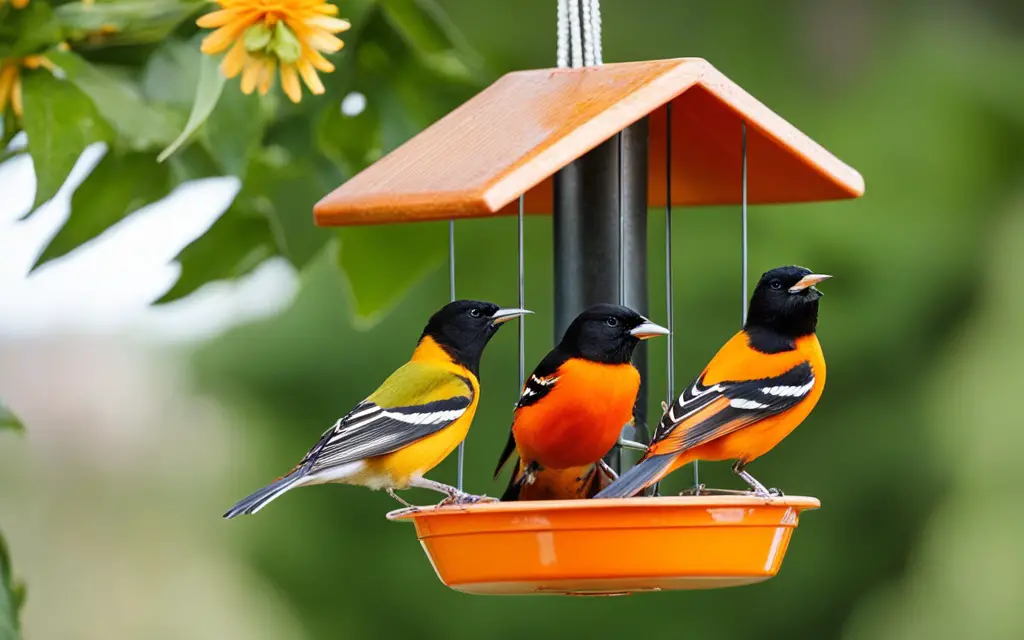Welcome to the delightful world of birdwatching and DIY projects combined! Creating your own oriole feeders is not only a cost-effective way to invite these vibrant birds into your yard but also an incredibly fulfilling activity. By following a few simple diy oriole feeder steps, you can provide a welcoming environment tailored to the unique preferences of orioles. Whether you’re using homemade oriole feeder instructions or your creativity, these tips will ensure you enjoy the sight and sounds of these beautiful birds this season.
Key Takeaways
- Creating DIY oriole feeders is cost-effective and enjoyable.
- Attracting orioles involves understanding their natural habits and preferences.
- DIY projects, such as oriole feeders, can be a great way to enjoy nature.
- Simple DIY oriole feeder steps can help bring these vibrant birds to your yard.
- Homemade oriole feeder instructions are easy to follow and rewarding.
Introduction to DIY Oriole Feeders
When it comes to inviting vibrant orioles into our backyards, providing a variety of oriole feeders is essential. These cheerful birds are drawn to fruit feeders, nectar feeders, and jelly feeders. By diversifying the types of diy bird feeders we use, we can cater to the orioles’ different dietary needs and preferences.
Offering a natural food source, such as orange slices, is an effective way to attract these beautiful creatures. Not only do oriole feeders help in providing nutrition, but they also create a friendly environment for the birds. The addition of bird baths can further enhance your garden, making it an irresistible haven for orioles.
Consider enhancing your backyard with various diy bird feeders such as nectar feeders filled with homemade nectar, or jelly feeders offering grape jelly, a favorite among orioles. For those looking to craft their own feeders, fruit feeders made from simple household items can be a rewarding project.
In the forthcoming sections, we will delve into the specifics of creating these oriole feeders. From fruit feeders to jelly feeders, you’ll find detailed instructions on how to bring these playful birds closer to your home. Stay tuned to transform your space into a delightful oriole sanctuary.
Materials Needed for DIY Oriole Feeders
When crafting a DIY oriole feeder, using the right materials is crucial to ensuring durability and attracting these vibrant birds effectively. To get started, let’s delve into the essential components and tools you’ll need for constructing a variety of oriole feeders.

Common Materials
Most of the materials for DIY oriole feeders can be found around your home or purchased inexpensively at your local hardware store. Here is a list of common items required:
| Material | Purpose |
|---|---|
| Scraps of Lumber | Base and frame structure |
| Dowels | Perches for orioles to sit |
| Galvanized Nails | Securing different parts together |
| Waterproof Glue | Ensuring joints and attachments last |
| Coat Hangers | Hanging hooks and structure |
| Oranges | Creating an orange wreath feeder |
These materials are versatile and can be used to create a variety of suet feeders or even simple feeders involving mealworms to keep orioles well-nourished.
Special Tools
While common materials are often readily available, having the right tools on hand can make the process smoother and more enjoyable. Here are some special tools to consider:
| Tool | Purpose |
|---|---|
| Drill | Creating holes for screws and dowels |
| Saw | Cutting wood into desired shapes and sizes |
| Wire Cutters | Shaping and trimming coat hangers |
| Hammer | Pounding nails into place securely |
| Sandpaper | Smoothing out rough edges |
By gathering these tools, you can ensure you can comfortably assemble any feeder, whether for mealworms or suet, that caters to attracting and feeding orioles in your backyard.
How to Make a Basic Homemade Oriole Feeder
Constructing an oriole feeder at home is not only fulfilling but also an effective way to attract these vibrant birds to your backyard. Here’s a comprehensive oriole feeder building guide to get you started.
Step-by-Step Guide
First, gather all necessary materials which typically include a shallow dish for jelly, wire for hanging, orange halves, and a base. Refer to the step-by-step oriole feeder guide from TMB Studio for more detailed instruction:
1. Start by cutting an orange in half.
2. Attach each half to a base using a small nail or screw.
3. Fix a shallow dish to the base where you can place grape jelly.
4. Use wire to create a secure hanging mechanism.
Essential Tips to Keep in Mind
When considering how to make oriole feeders at home, think about the birds’ natural preferences. Orioles are attracted to the color orange and enjoy foods like grape jelly, orange slices, and mealworms. Ensuring your feeder meets these criteria will improve your chances of attracting orioles.
| Tip | Importance | Recommendation |
|---|---|---|
| Use bright orange colors | High | Orioles are visually attracted to orange hues |
| Include favorite foods | Critical | Grape jelly, orange slices, and mealworms should be available |
| Secure feeder structure | High | Ensure the feeder is stable and safe for the birds |
| Position strategically | Medium | Place in an area accessible but safe from predators |
With this oriole feeder building guide, you’ll be ready to attract these beautiful birds to your yard. Happy birdwatching!
Creative DIY Oriole Feeder Ideas
Get ready to transform your backyard with creative DIY oriole feeder ideas that are both eco-friendly and resourceful. Let’s explore how you can easily reuse household items and outdoor materials for bird feeders to attract vibrant orioles to your yard.
Using Household Items
One of the best ways to create oriole feeders is to reuse household items that you already have at home. This not only saves money but also minimizes waste. Here are some ideas:
| Item | Transformation |
|---|---|
| Plastic Bowls | Drill holes for drainage and hang with twine to create a simple nectar feeder. |
| Coat Hangers | Bend and shape into a frame to hold orange slices or small cups for jelly. |
| Yarn | Create a colorful hanging feeder by weaving yarn around a metal frame to hold fruit pieces. |
Reusing Outdoor Materials
Outdoor materials for bird feeders are abundant and just waiting to be repurposed into charming oriole feeders. I enjoy gathering materials from my surroundings and turning them into functional designs:
| Material | Transformation |
|---|---|
| Tree Branches | Combine branches to form a natural perch structure where orioles can land and feed. |
| Old Wood Planks | Cut and assemble small platforms or trays to create a sturdy base for food. |
| Clay Pots | Turn upside down and attach a dish to the bottom to hold nectar or jelly. |
By leveraging these creative DIY oriole feeder ideas and making use of everyday items and outdoor materials for bird feeders, you’ll create a warm and inviting space for orioles. Not only will you enjoy watching these beautiful birds, but you’ll also be contributing positively to the environment.

Attracting Orioles: More Than Just Feeders
Attracting orioles requires more than just placing feeders in your garden. Incorporating the right types of food and water sources can significantly increase your yard’s appeal to these bright beauties.
Choosing the Right Fruits
One surefire way to draw orioles to your yard involves choosing the right fruits. Orioles are particularly fond of fresh, juicy options. Offering orange slices for birds is a proven method, as these bright, citrusy treats are incredibly enticing to them. Additionally, you can cut grapes in half to make them easier for the birds to consume. By keeping a fresh supply of oranges and grapes, you’ll keep orioles flocking back for more.
Utilizing Moving Water Sources
Aside from fruit, attracting orioles with moving water has been highly effective. Orioles, like many birds, are attracted to the sight and sound of moving water. Adding a birdbath with a small waterfall or a bubbler enhances your garden’s attractiveness. These water features not only provide drinking water but also help these birds clean their feathers, making them feel more at home in your yard.
Placement and Maintenance of Your Oriole Feeders
Ensuring your oriole feeders are correctly placed and well-maintained is vital to attracting these colorful birds. Let’s delve into the specifics to make your yard a haven for orioles.

Optimal Locations
For optimal feeder placement, it’s essential to consider both visibility and safety. Position feeders where they are easily seen by orioles during their migration. Placing them near trees or shrubs provides the birds with nearby nesting sites and a sense of security. This also helps protect the birds from predators while they feed. Additionally, it’s beneficial to place feeders in locations that offer some shade to prevent nectar from spoiling quickly.
How to Clean and Maintain Feeders
Regular feeder cleaning is crucial for the health of the birds. A clean feeder prevents the growth of mold and bacteria, which can be harmful to orioles. Conduct a thorough cleaning at least once a week using a mild soap and water solution, and rinse well. During the peak of migration, more frequent cleaning may be necessary. For long-term feeder maintenance, inspect for wear and tear regularly, replacing any damaged parts to ensure the feeders remain safe and attractive.
Feeding orioles with a variety of protein sources such as mealworms and offering fresh fruit helps in keeping them healthy. Early feeder placement before the orioles’ migration season ensures that the birds can locate the feeders as soon as they arrive in your area. Proper maintenance and strategic placement will turn your yard into a paradise for these breathtaking birds.
6 Easy Tips for DIY Oriole Feeders
Creating DIY oriole feeders is a wonderful way to attract these vibrant birds to your yard while catering to their specific needs. Here are six easy tips to get you started and ensure your backyard becomes a haven for these beautiful birds.
1. Consider Seed Variety: While orioles prefer sweet foods, incorporating a diverse seed variety can benefit other birds that visit your feeders. Sunflower seeds, for example, provide essential nutrients and can attract a wider range of bird species.
2. Utilize Seasonal Foods: Adjusting your feeders to include seasonal foods like fresh berries in the summer and suet in the winter can keep orioles coming back year-round. Seasonal fruits can supplement their diet and attract them during different times of the year.
3. Ground Feeding: Although orioles typically feed from elevated positions, placing food on the ground can cater to ground-feeding birds and help maintain a balanced ecosystem in your yard.
4. Ensure Bird Safety: Always prioritize bird safety by using non-toxic materials and avoiding sharp edges in your feeders. Safe feeders help protect the birds from harm and encourage them to return frequently.
5. Provide Natural Shelter: Surrounding your feeders with natural shelter, such as shrubs and trees, gives orioles a safe place to rest and hide from predators. This added layer of security makes your yard more inviting.
6. Keep It Simple: Sometimes, the simplest designs are the most effective. Use household items like orange halves, small dishes for grape jelly, and simple nectar feeders to create a welcoming environment for orioles.
By following these tips, you’ll create a variety of oriole feeders that cater to their dietary needs while enhancing your outdoor space with natural shelter and a diverse seed variety. Enjoy the beauty and joy that these cheerful birds bring to your garden!
Conclusion
Embarking on DIY bird feeding projects is not just a delightful way to attract vibrant orioles to your backyard; it also provides a deeper connection with nature. Throughout this guide, we’ve explored various homemade oriole feeder tips that are simple, cost-effective, and eco-friendly. Whether crafting from household items or using specific materials like galvanized nails and waterproof glue, the joy of creating feeders is immensely rewarding.
One of the significant advantages I’ve found in these projects is their educational value. Not only do they nurture a love for wildlife, but they also offer a hands-on learning experience for kids and adults alike. Watching orioles thrive on carefully made feeders highlights the positive impact we can have on our local ecosystem. By implementing these homemade oriole feeder tips, we support the well-being of these beautiful birds, ensuring they have reliable food sources during migration seasons.
Ultimately, attracting orioles to your backyard and sharing these experiences with family and friends fosters a sense of community among bird enthusiasts. The aesthetic pleasure of watching orioles is complemented by knowing our DIY efforts contribute to their nourishment and habitat. So, let’s all take a step forward, embrace these diy bird feeding projects, and share our unique journeys. Through our collective creativity and efforts, we cultivate a vibrant, avian-friendly environment right in our backyards.
FAQ
What types of DIY oriole feeders can I make at home?
What materials do I need to make a basic oriole feeder?
How do I attract orioles to my yard besides using feeders?
Where is the best place to put my oriole feeders?
How often should I clean and maintain my oriole feeders?
Can I use household items to create effective oriole feeders?
What fruits are best for attracting orioles?
Why is moving water important for attracting orioles?
How do I ensure my oriole feeders are safe for the birds?
When should I put out my oriole feeders?
What are some protein-rich foods that I can offer orioles?
Source Links
- https://www.birdsandblooms.com/backyard-projects/diy-bird-feeder/easy-diy-oriole-feeder/
- https://howtothisandthat.com/diy-oriole-bird-feeder/
- https://www.birdsandblooms.com/birding/attracting-birds/bird-nesting/how-to-attract-orioles/

My name is Shane Warren, the author behind Your Bird Buddy – your ultimate guide to the wonderful world of birds! Unleash your inner avian explorer as we delve into a vibrant library of knowledge dedicated to all things feathered. From learning about diverse bird species from across the globe to understanding their captivating habitats and behaviors, I’m here to fuel your passion for these magnificent creatures. Not only that, but I also provide valuable insights on being a responsible and informed pet bird owner. Join our vibrant community and let’s celebrate the feathered wonders of the world together – one chirp at a time. And be sure to join our Your Bird Buddy Community over on Facebook!


Comments are closed